To learn how major companies around the world are using big models and what the differences are between this year and last, please read Artificial Analysis's Q1 2025 AI Application Report to understand the current trends in AI development.
In the first half of 2025, big models are moving from the technological frontier to production reality.
A recent survey of thousands of companies across Europe, America, and Asia reveals that generative AI is no longer just an R&D experiment; 45% have already deployed it in production environments.
Engineering R&D, customer support, and marketing are the most active frontiers for AI!
This report, compiled from over a thousand participants, includes large tech companies, retail businesses, government, and education sectors.
This report provides a comprehensive understanding of the current use of big models across various industries.

The first question the report answered was how big models are actually used. The results showed that only 45% of respondents use big models in production.
23% of respondents use big models for prototyping, and 27% use them for information search. It seems that big models are entering the production phase, but there's still a long way to go.
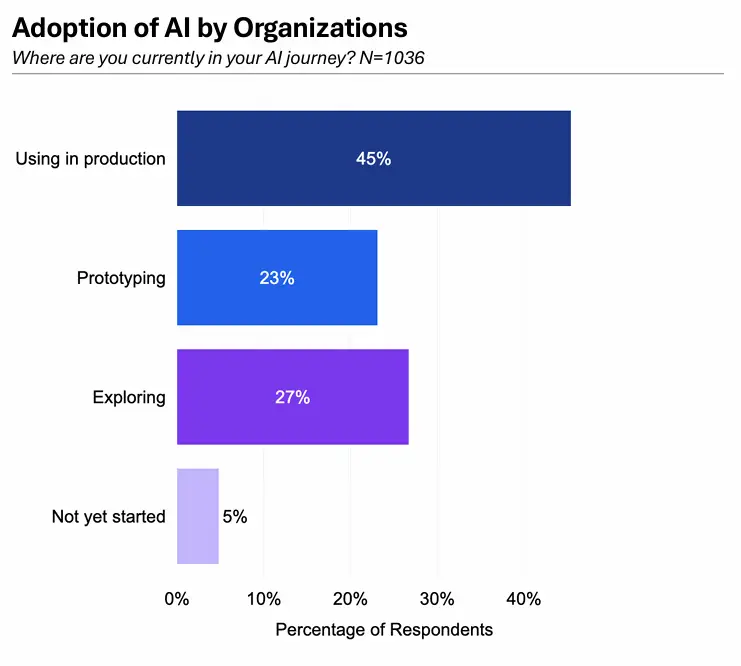
• How Users Pay for AI
As for how people pay for AI, 32% of respondents will build customized big models, 27% will simply purchase standard big model services through APIs, 25% will want both, and 16% will just buy them for free.

In terms of their expectations for AI usage over the next 12 months, the majority of respondents (66%) expect AI to be used in engineering and R&D, followed by customer support (37%) and sales (33%).
The former reflects increased interpretability and robustness, while the latter reflects the expectation that big models will have higher emotional intelligence in the future.
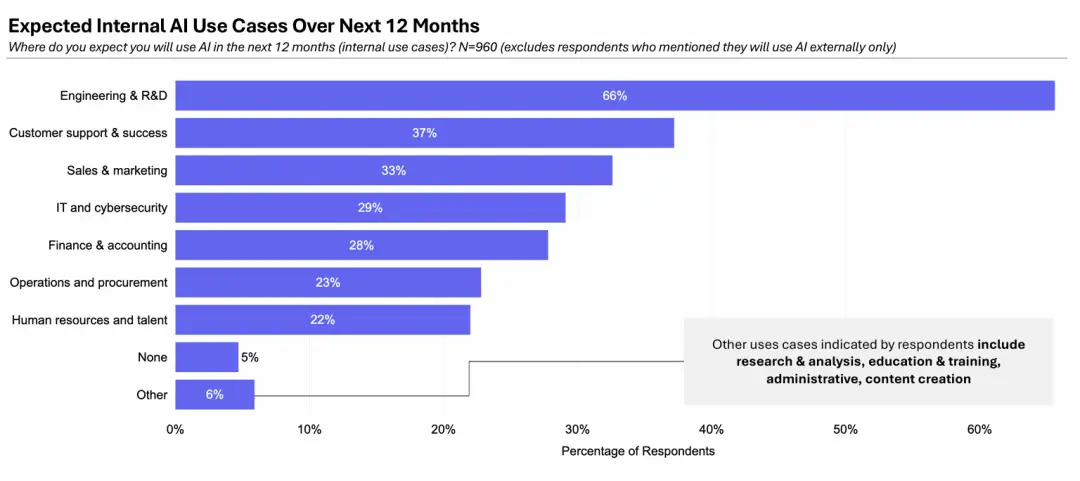
As for the factors currently cited as challenges in using big models, respondents (55%) cited insufficient knowledge of big models as the most common criterion.
Half of the respondents expressed concern that big models might occasionally become artificially incompetent, while half cited high costs as a major challenge.
Additionally, respondents also cited integration with other devices, response speed, and regulatory compliance as challenges in the current application of big models.
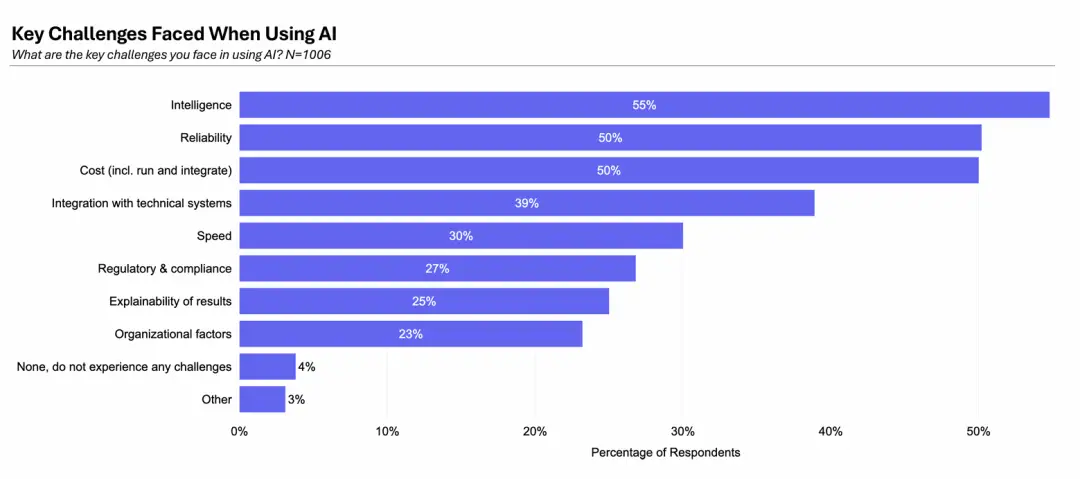
• Fierce Competition in the Red Ocean
Among the most commonly used big model chat tools, ChapGPT maintains its first-mover advantage, followed closely by Gemini and Claude.
Chinese big models were categorized as "other," likely due to the fact that most respondents are located in Europe, the United States, and India.
Notably, most users currently use multiple big models simultaneously, with respondents using an average of 4.7 different big models.
This suggests that the market is still in a competitive red ocean, with most users lacking strong brand loyalty and instead shopping around.
Brand loyalty has yet to be established, and users are voting with their feet.


Compared to 24 years ago, OpenAI's models maintained their leading position. Google's Gemini and Deepseek made the most progress, while Claude and Illama showed slight decline.
This year also saw the emergence of new players such as xAI's Grok and Alibaba's Qwen.
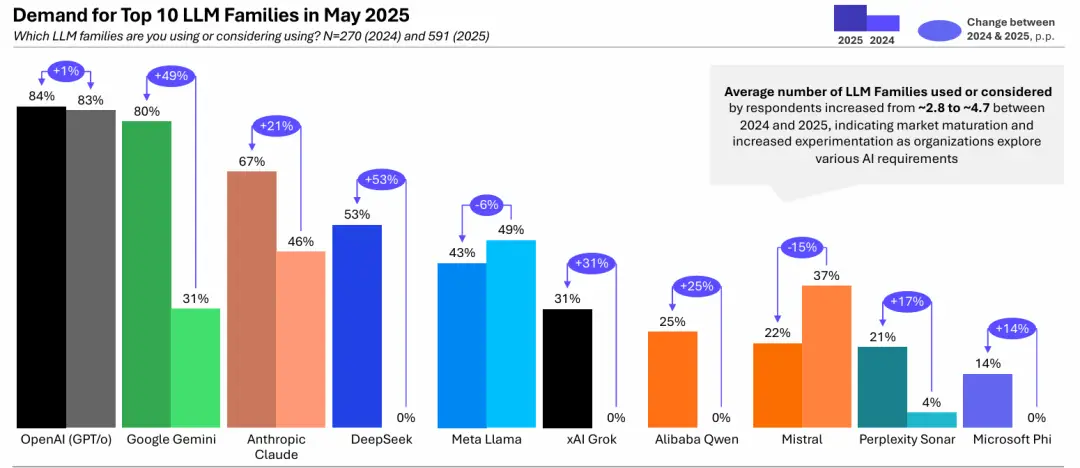
In the customized field of large-model programming assistants, Copliot and Curser were still the most widely used, while Chinese tools such as Trace were not included in the statistics.

Regarding global respondents' acceptance of Chinese large-scale models, the majority (55%) accept Chinese large-scale models but require them to be deployed outside of China. This proportion is particularly high in Europe and the United States.
This means that Chinese large-scale models, when going global, need to go global through third-party platforms like Manus in order to gain market share in Europe and the United States.

• Large-Model Training Hardware
In the field of large-model training hardware, NVIDIA still holds a dominant position (78%), followed by Google's TPU and Su's AMD.
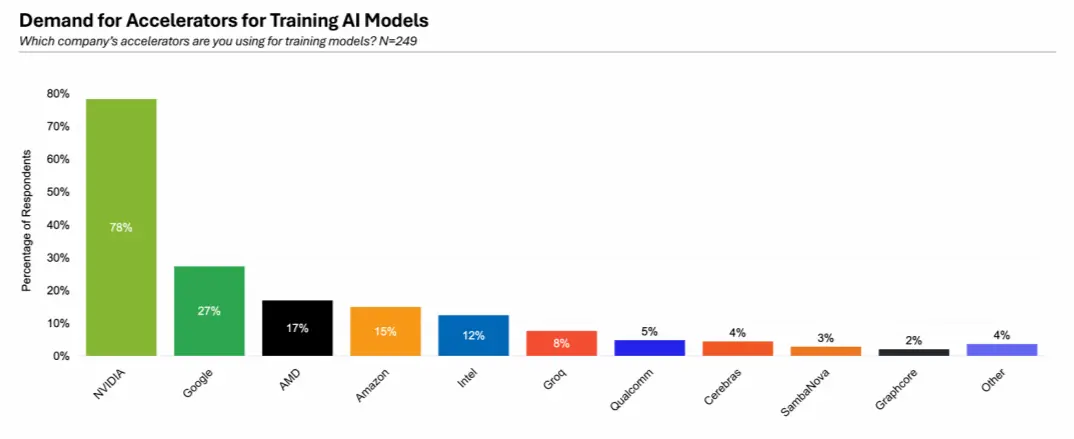
In addition to LLM, the report also covers multimodal applications. For example, OpenAI models are widely used in language generation, but their advantages are not overwhelming.
Respondents focused primarily on factors such as speech stability and quality, authenticity of generated speech, and latency.
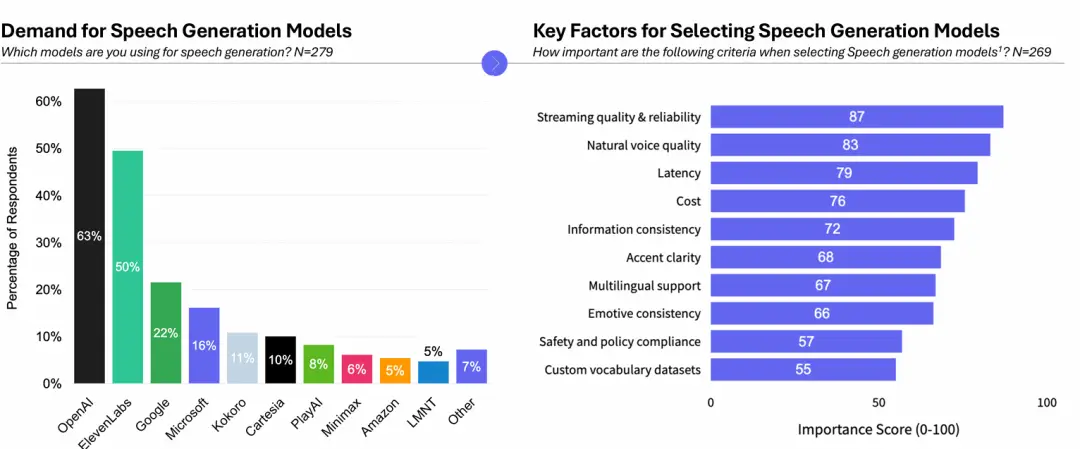
For video generation tasks, respondents also used models from OpenAI and Google, with OpenAI models being the most popular.
However, the focus shifted to adherence to prompts and cost, reflecting the need for improvement in current video generation models' ability to understand and follow user commands.
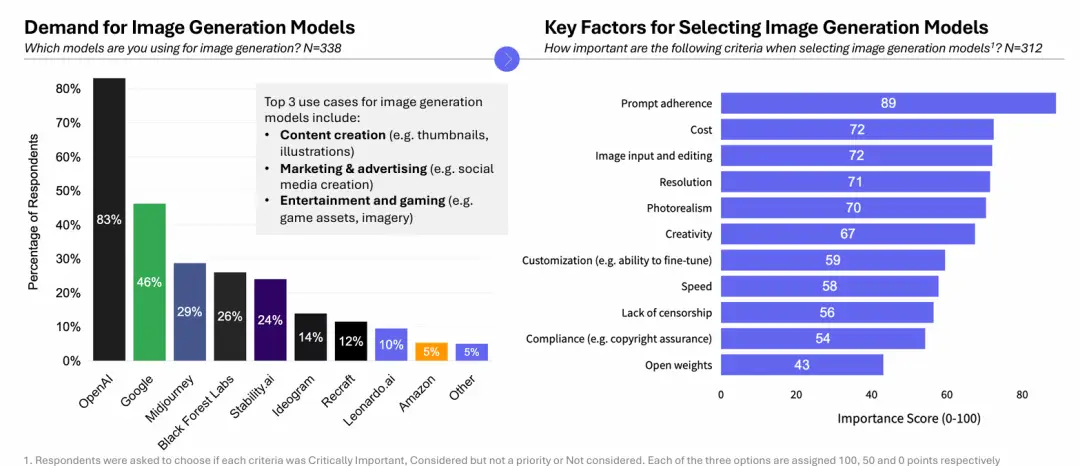
Summarizing this large-scale model application report, AI application will reach a critical turning point in the first half of 2025.
45% of companies have already deployed AI in production environments, with engineering R&D (66%), customer support (37%), and marketing (33%) being the most popular use cases.
• OpenAI defends its position, while Google Gemini makes a strong advance.
Chinese models are also being cautiously adopted by global companies—55% of respondents are willing to use them, but only on non-Chinese infrastructure.
Multi-model competition has become the norm, with companies evaluating an average of 4.7 LLMs. NVIDIA dominates the training hardware market with a 78% share, highlighting ecosystem barriers.

At the same time, reliability, cost, and intelligence remain three major obstacles to AI implementation.
